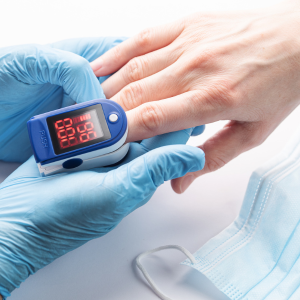Oxygen is the colorless, odorless gas that is both an abundant element and a life-sustaining constituent. Oxygen therapy is a treatment that gives you additional oxygen for health benefits. The air we breathe contains round 21 percent oxygen, which is sufficient for those with healthy lungs. People who cannot absorb enough oxygen from the air, due to certain diseases, often need oxygen therapy so that their bodies can function normally. In these cases, people are given oxygen through a metal cylinder, which distributes the oxygen through tubing that runs directly in to the nostrils, where the lungs can absorb it. Transtracheal oxygen therapy is given through a surgically inserted breathing tube, which delivers oxygen to those who cannot breathe on their own. In these situations, oxygen therapy is essential.
Positive Effects of Oxygen Therapy
Because too little oxygen can trigger pain-causing neurotransmitters, oxygen therapy can be effective for reducing all types of pain. Oxygen therapy helps increase the body’s ability to destroy harmful cells, those that can cause illness and disease. Therefore, oxygen therapy can be used as a preventive treatment in people as well as a means to manage exiting health problems and diseases. For many people who receive inhaled oxygen therapy, breathing becomes easier, less labored. The supplemental oxygen helps reduce fatigue and improve sleep. Oxygen therapy even lengthens the life span of those who have underlying health conditions, such as COPD (chronic obstructive pulmonary disease), heart failure, cystic fibrosis or pneumonia.
In the past, oxygen therapy was merely a treatment for people with breathing problems. Alternative treatments are becoming more popular, however. To date, oxygen therapy is widely used in unconventional ways, which has incited much controversy in the medical community. Just about anyone can find a reason to use oxygen therapy. From headache sufferers to cancer patients, the practice has something for everyone. Advocates of oxygen therapy consider its uses limitless. Because the body needs oxygen to make energy, it is not hard to believe that more oxygen would produce more energy and in turn encourage better health.
 Oxygen Therapy as a Cure for AIDS
Oxygen Therapy as a Cure for AIDS
Many researchers speculate that oxygen therapy could benefit people with AIDS. Some even feel it could cure the disease, says Matthew Galas in an article from the Vanderbilt University Psychology Department. Since these researchers have anecdotal evidence rather than scientific case studies, some physicians do not recognize or even acknowledge this proof, although that fact does not make the treatment any less effective.
Oxygen Therapy as a Cancer Treatment
Some types of oxygen therapy are thought to reduce anaerobic cancerous growths, says Galas. People who support oxygen therapy believe that cancer cells thrive in low-oxygen environments. By supplementing oxygen, cancer is unable to flourish in the body as it did. The therapy helps increase the cells’ efficiency and energy, promoting better immune-health. Research is still pending, although the positive effects of oxygen therapy continue to be realized by patients and doctors alike.
Oxygen Therapy for Chronic Headaches
Most people experience at least occasional headaches, whether brought on by stress, hunger or the weather. Others have chronic headaches, which impair their thinking, interfere with rest and make everyday chores a struggle. Over-the-counter and prescription medications offer relief, but overuse of these drugs can lead to rebound headaches—a condition that actually leads to more headaches when medicines lose their effectiveness. Oxygen therapy could help these headache sufferers find relief without pills. For best results, oxygen should be delivered at the first sign of pain. For some users, relief occurs as swiftly as 15 minutes.
Various Types of Oxygen Therapy
A variety of oxygen therapies exist, including inhaled air, hyperbaric oxygen therapy and hydrogen peroxide oxygen therapy.
Hyperbaric oxygen therapy is considered the most effective because users are able to breathe pure air, which surrounds them in a pressurized chamber. The most common uses for this type of oxygen therapy include treating serious infections and slow-healing wounds, such as those that occur with diabetes or radiation injury. Healing occurs as increased oxygen dissolves in the blood and begins circulating throughout the body.
Hydrogen peroxide oxygen therapy, often called H202 therapy, is useful because hydrogen peroxide helps regulate the amount of oxygen that gets to your cells. In this type of treatment, hydrogen peroxide becomes a catalyst by which more oxygen is released into the body.
Inhaled air, as previously discussed, oxygen therapy using inhaled air is the standard method, used in hospitals, ambulances and for personal home use by patients with chronic and debilitating diseases.
Considerations
As with any medical treatment, complications are possible. Talk to a trusted health-care adviser to determine whether oxygen therapy is the right treatment for you.
References: Vanderbilt University Psychology Department; National Heart Lung and Blood Institute; AmericanCancerSociety: Mayo Clinic.
